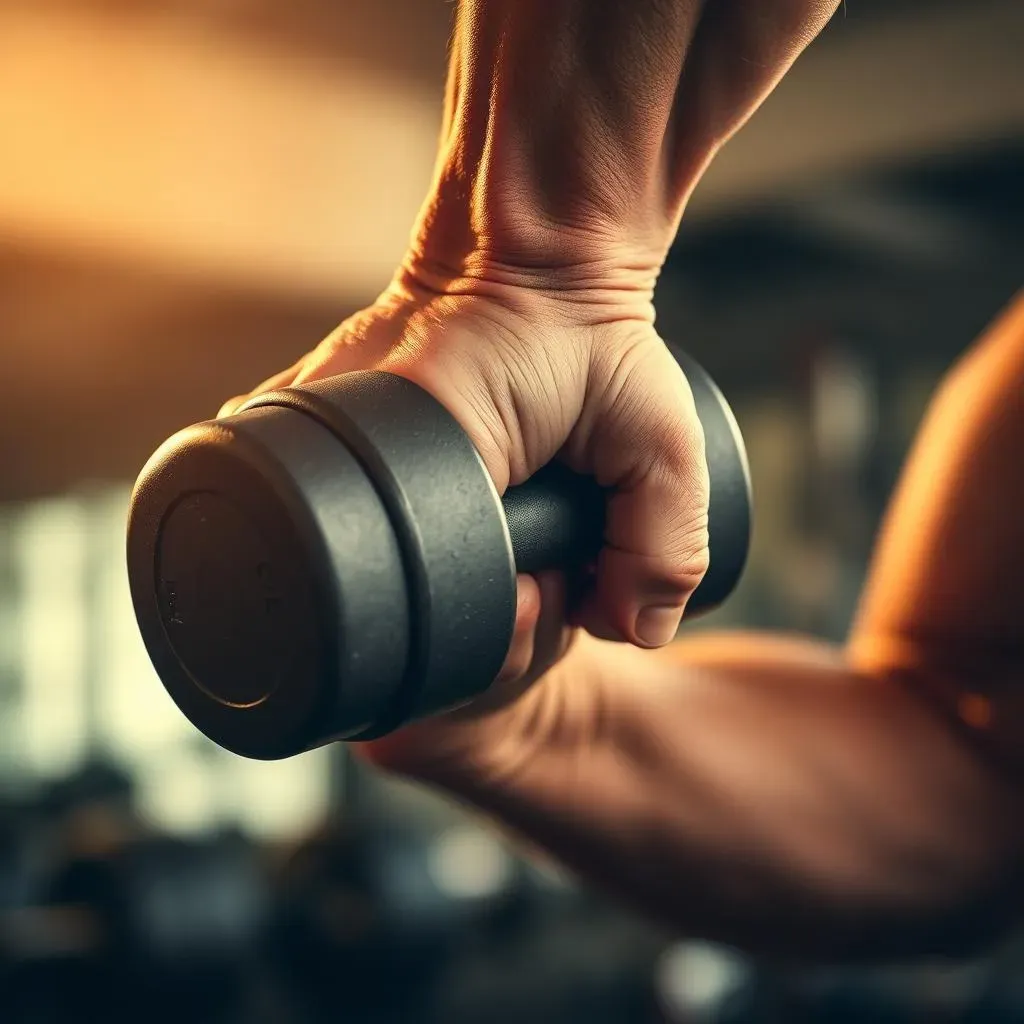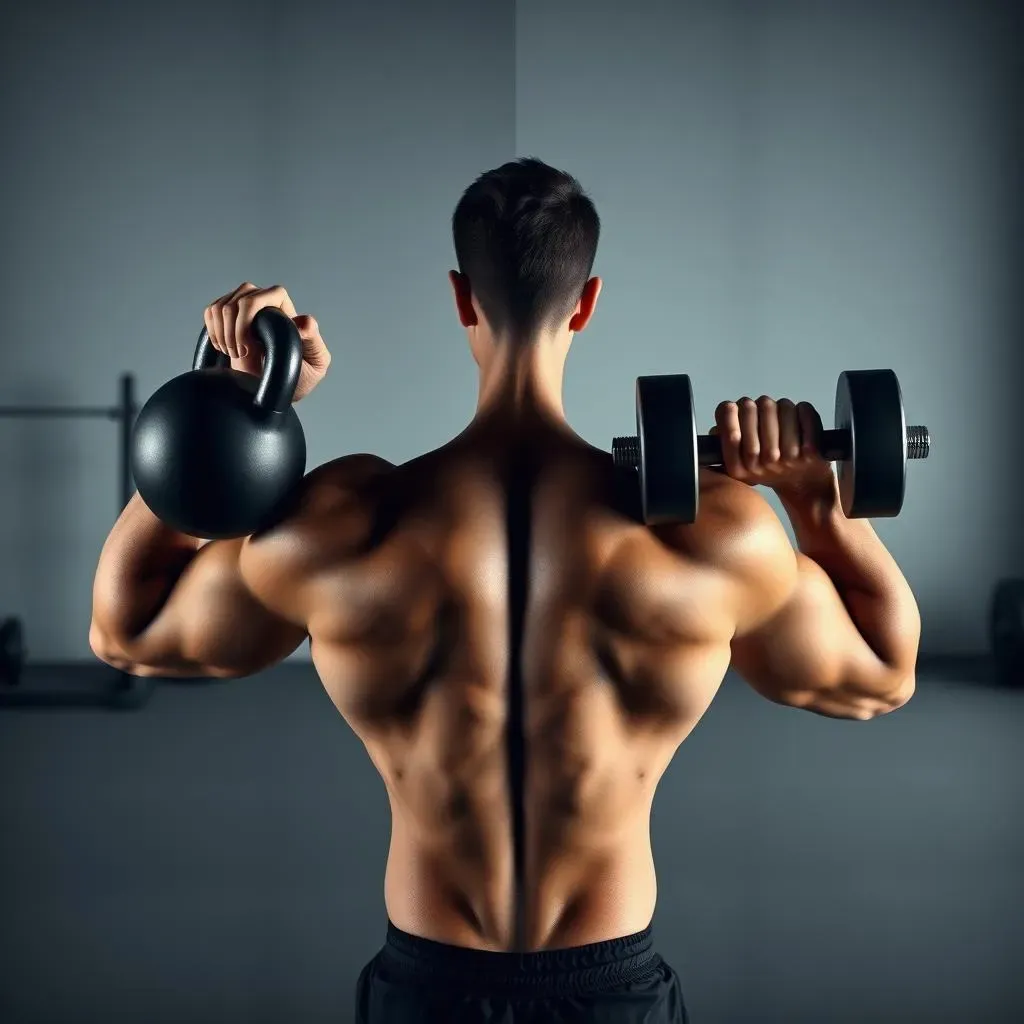Table of Contents
When it comes to building shoulder strength and size, the overhead press is a cornerstone exercise. But the question arises: is the kettlebell shoulder press vs dumbbell press the superior choice? Both offer unique benefits and challenges, making the decision less about one being "better" and more about which aligns with your specific goals and needs. In this article, we'll dissect the kettlebell shoulder press vs dumbbell press, examining the muscles worked, the advantages of each, and how to determine which variation is the right fit for your training regimen. We'll explore how the kettlebell's offset center of gravity can enhance stability and core engagement, while also acknowledging the dumbbell's versatility and accessibility. By the end, you'll have a clear understanding of the nuances of the kettlebell shoulder press vs dumbbell, empowering you to make an informed decision and optimize your shoulder training for maximum results.
Kettlebell Shoulder Press vs Dumbbell: An Overview

Kettlebell Shoulder Press vs Dumbbell: An Overview
The Tale of Two Presses
So, you're diving into the world of overhead presses, huh? Smart move! It's a fantastic exercise for building strong, sculpted shoulders. But now you're facing the age-old question: kettlebell shoulder press vs dumbbell – which one should you choose? Well, let's break it down. Both the kettlebell and dumbbell shoulder press are effective exercises, but they offer distinct advantages that cater to different training goals and preferences. Think of it like choosing between a Swiss Army knife (the dumbbell) and a specialized tool (the kettlebell). Both can get the job done, but one might be better suited depending on the task at hand.
Dumbbells: The Versatile Veteran
Dumbbells are the OGs of the weightlifting world. They're readily available, come in a wide range of weights, and allow for a natural range of motion. This makes them incredibly versatile for various shoulder press variations, like the Arnold press or seated dumbbell press. Plus, because you're working with two independent weights, dumbbells can help identify and correct strength imbalances between your left and right sides. Ever notice one side struggling more than the other? Dumbbells will expose that weakness in a heartbeat.
Kettlebells: The Unconventional Challenger
Now, let's talk kettlebells. These cannonball-shaped weights with handles are more than just trendy gym equipment. The kettlebell's unique offset center of gravity throws a wrench into the traditional shoulder press, forcing your stabilizer muscles to work overtime. This increased stability demand can translate to better shoulder health and improved core strength. Think of it as a built-in stability challenge that adds an extra layer of intensity to your workout. Plus, the kettlebell's handle allows for unique grip variations, like the bottoms-up press, which further enhances wrist and forearm strength. It is important to remember that the kettlebell shoulder press is not inherently "better" than the dumbbell press, but rather offers a different set of benefits.
Feature | Dumbbell Shoulder Press | Kettlebell Shoulder Press |
|---|---|---|
Stability | Requires good stability | Requires excellent stability |
Versatility | High | Moderate |
Accessibility | High | Moderate |
Grip Options | Limited | More diverse |
Muscles Worked: Kettlebell Shoulder Press vs Dumbbell Shoulder Press

Muscles Worked: Kettlebell Shoulder Press vs Dumbbell Shoulder Press
The Prime Movers: Deltoids and Triceps
Alright, let's get down to the nitty-gritty. Both the kettlebell and dumbbell shoulder press primarily target the deltoids – that's your shoulder muscles, folks! Specifically, you're hitting the anterior (front), lateral (side), and posterior (rear) deltoids. However, the degree of activation can vary slightly between the two exercises. You'll also be engaging your triceps to extend your elbow and lock out the weight overhead. So, whether you're team kettlebell or team dumbbell, your shoulders and triceps are getting a serious workout.
Think of your deltoids as a team of horses pulling a chariot. The anterior deltoid is like the lead horse, initiating the movement, while the lateral and posterior deltoids provide support and stability. And the triceps? They're the whip, ensuring a strong and powerful finish.
The Supporting Cast: Core and Stabilizers
Now, here's where things get interesting. While both exercises work the same primary muscles, the kettlebell shoulder press demands significantly more from your core and stabilizer muscles. The kettlebell's offset center of gravity creates instability, forcing your core to work overtime to keep you balanced and prevent you from wobbling all over the place. This increased core engagement can translate to better overall stability and improved performance in other exercises. With dumbbells, the weight is more evenly distributed, requiring less stabilization. This isn't necessarily a bad thing, but it does mean you're not getting the same level of core activation.
Ever tried walking with a bucket of water versus a box of rocks? The bucket of water is like the kettlebell – constantly shifting and challenging your balance. The box of rocks is like the dumbbell – stable and predictable. Both will get you to your destination, but one will give your core a much tougher workout.
Muscle Group | Dumbbell Shoulder Press | Kettlebell Shoulder Press |
|---|---|---|
Anterior Deltoid | High Activation | High Activation |
Lateral Deltoid | High Activation | High Activation |
Posterior Deltoid | Moderate Activation | Moderate Activation |
Triceps | High Activation | High Activation |
Core | Moderate Activation | High Activation |
Stabilizer Muscles | Moderate Activation | High Activation |
Kettlebell Shoulder Press Benefits

Kettlebell Shoulder Press Benefits
Alright, let's dive into why the kettlebell shoulder press is more than just a quirky alternative to the dumbbell. The kettlebell shoulder press benefits are numerous, and they extend beyond just building shoulder strength. One of the biggest advantages is the enhanced stability it demands. The offset center of gravity of the kettlebell forces your stabilizer muscles – we're talking rotator cuff, core, and even grip – to work overtime. This constant battle against instability translates to better shoulder health, improved core strength, and a more functional, real-world strength. Think about it: life rarely presents you with perfectly balanced weights. The kettlebell trains your body to handle unpredictable loads, making you more resilient and less prone to injury.
Another key benefit is the unique grip options the kettlebell offers. You can perform the standard kettlebell press, but you can also experiment with variations like the bottoms-up press, where you hold the kettlebell upside down. This variation skyrockets the stability demands, forcing you to engage your grip, forearms, and rotator cuff like never before. It's like a built-in prehab exercise for your wrists and shoulders! And let's not forget the mental focus required to control the kettlebell. It's not just about lifting the weight; it's about mastering the movement and maintaining control throughout the entire range of motion. This increased focus can translate to better mind-muscle connection and improved overall performance.
- Enhanced Stability: Strengthens stabilizer muscles for better shoulder health.
- Improved Core Strength: Constant core engagement for better balance and stability.
- Unique Grip Options: Bottoms-up press for increased grip and forearm strength.
- Increased Mental Focus: Promotes better mind-muscle connection.
Dumbbell Shoulder Press Benefits

Dumbbell Shoulder Press Benefits
Versatility and Accessibility
let's flip the script and talk about why the dumbbell shoulder press is a champion in its own right. One of the biggest dumbbell shoulder press benefits is its sheer versatility. You can perform it standing, seated, or even lying on a bench. This adaptability makes it a great option for people with different mobility levels or those who want to target their shoulders from various angles. Plus, dumbbells are incredibly accessible. Most gyms have a wide range of dumbbell weights, and they're relatively inexpensive to purchase for your home gym. So, whether you're a seasoned lifter or just starting out, the dumbbell shoulder press is a readily available and effective exercise.
Think of dumbbells as the "everyman" of the weightlifting world. They're not flashy or exotic, but they're reliable, versatile, and always get the job done. They're the workhorse of shoulder exercises, and they deserve our respect.
Isolation and Imbalance Correction
Another key advantage of the dumbbell shoulder press is its ability to isolate each shoulder individually. Because you're working with two independent weights, you can focus on ensuring each side is working equally hard. This is crucial for identifying and correcting strength imbalances. Ever notice one shoulder feeling stronger than the other? The dumbbell shoulder press will highlight that imbalance, allowing you to address it with targeted training. This can not only improve your shoulder strength but also prevent injuries down the road. Plus, the dumbbell allows for a more natural range of motion compared to a barbell, which can be beneficial for people with shoulder impingements or other mobility issues.
Progressive Overload and Muscle Growth
Finally, the dumbbell shoulder press is a fantastic exercise for promoting progressive overload and muscle growth. Progressive overload simply means gradually increasing the weight, reps, or sets over time to challenge your muscles and force them to adapt. Dumbbells make it easy to implement progressive overload, as you can incrementally increase the weight in small increments. This allows you to consistently challenge your shoulders and stimulate muscle growth. Plus, the dumbbell shoulder press allows for a full range of motion, which can lead to greater muscle fiber recruitment and increased hypertrophy (muscle growth). So, if you're looking to build bigger, stronger shoulders, the dumbbell shoulder press is a must-have in your arsenal.
Benefit | Description |
|---|---|
Versatility | Can be performed standing, seated, or lying down. |
Accessibility | Readily available in most gyms and relatively inexpensive. |
Isolation | Allows for individual shoulder focus and imbalance correction. |
Progressive Overload | Easy to implement for consistent muscle growth. |
Full Range of Motion | Promotes greater muscle fiber recruitment and hypertrophy. |
Kettlebell Shoulder Press vs Dumbbell: Which is Right for You?

Kettlebell Shoulder Press vs Dumbbell: Which is Right for You?
Assess Your Goals
Alright, so you've heard the case for both the kettlebell and dumbbell shoulder press. Now comes the million-dollar question: which one is right for you? Well, the answer, as with most things in fitness, depends on your individual goals. Are you primarily focused on building maximum strength and muscle mass? Or are you more interested in improving stability, core strength, and overall functional fitness? If your goal is to pack on serious size and strength, the dumbbell shoulder press might be the better option. The ability to incrementally increase the weight and focus on isolating each shoulder can lead to greater hypertrophy. However, if you're looking to challenge your stability, improve your core strength, and develop more functional fitness, the kettlebell shoulder press is a fantastic choice.
Think of it like choosing between a powerlifting program and a CrossFit workout. Both will make you stronger, but they'll do it in different ways. The powerlifting program will focus on maximizing your one-rep max, while the CrossFit workout will emphasize functional movements and overall athleticism.
Consider Your Experience Level
Another important factor to consider is your experience level. If you're new to weightlifting, the dumbbell shoulder press might be a more accessible starting point. Dumbbells are easier to control and allow you to focus on proper form without the added challenge of instability. As you become more comfortable with the movement, you can then progress to the kettlebell shoulder press to further challenge your stability and core strength. However, if you have a solid foundation of strength and stability, you can jump right into the kettlebell shoulder press. Just be sure to start with a lighter weight and focus on mastering the movement before increasing the load. Remember, it's not about how much weight you can lift, but how well you can lift it.
Imagine you're learning to ride a bike. You wouldn't start on a mountain bike with no suspension, would you? You'd start on a comfortable, stable bike that allows you to focus on the basics. The same principle applies to weightlifting.
Mix and Match: The Best of Both Worlds
Ultimately, the best approach might be to incorporate both the kettlebell and dumbbell shoulder press into your training program. You can use the dumbbell shoulder press to build a solid foundation of strength and muscle mass, and then use the kettlebell shoulder press to enhance your stability, core strength, and functional fitness. This allows you to reap the benefits of both exercises and create a well-rounded shoulder workout. For example, you could start your workout with dumbbell shoulder presses to focus on building strength and hypertrophy, and then finish with kettlebell shoulder presses to challenge your stability and core. Or, you could alternate between the two exercises on different training days. The possibilities are endless! The key is to experiment and find what works best for you and your body.
Factor | Dumbbell Shoulder Press | Kettlebell Shoulder Press |
|---|---|---|
Primary Goal | Strength and Hypertrophy | Stability and Functional Fitness |
Experience Level | Beginner-Friendly | Intermediate-Advanced |
Best Use | Building a Solid Foundation | Enhancing Stability and Core Strength |
Training Approach | Can be part of any workout | Can be part of any workout |
Kettlebell Shoulder Press vs Dumbbell: Tailoring Your Choice for Optimal Results
Ultimately, the "winner" of the kettlebell shoulder press vs dumbbell debate depends on your individual goals and preferences. If you're aiming to enhance stability, core engagement, and functional strength, the kettlebell offers a unique advantage. However, if you prioritize readily available equipment, precise weight increments, and a more controlled range of motion, dumbbells are an excellent choice. Consider incorporating both variations into your training to reap the benefits of each, ensuring a well-rounded and effective shoulder workout routine. By understanding the nuances of each exercise, you can strategically select the best tool to achieve your desired outcomes and build stronger, healthier shoulders.